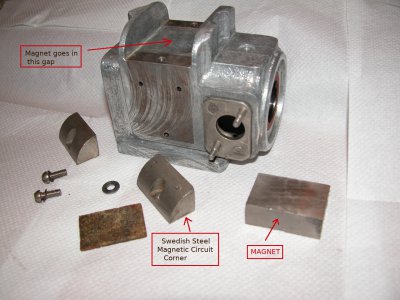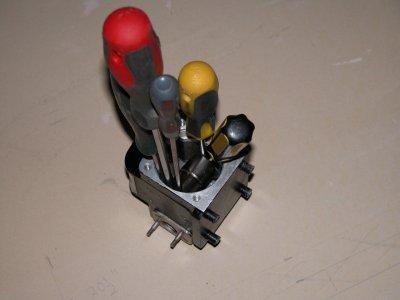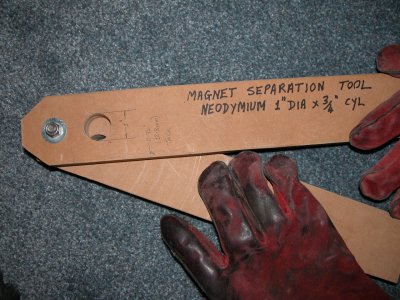- Joined
- Feb 7, 2013
- Messages
- 2,485
My Mitutoyo magnetic base has been pretty good for quite a few years until just lately when the
handle broke off that turns the magnet inside the base. It's just plastic and snapped off without
applying what I thought was too much force. I ended up taking the unit apart and pulling the
magnet to clean out any chips that may have dislodged inside. After cleaning, removing and
regreasing the base, the magnet was somewhat weaker......After a lot of experimentation
with some neodymium 1/2 x 1 x 2 magnets, I found out how to restore the magnet to even better
than new. The flat sides of the neodymium magnets apparently are the poles, at least that is
the way they are on my magnets. I placed one magnet on each vertical side of the mag base
using north pole on one side and south pole on the other. After rubbing the magnets back
and forth several times, I removed them and found the mag base was indeed better than ever.
The broken plastic handle was heated with a torch to melt the broken surfaces and pressed together
while the plastic edges were still melted. I reinforced the plastic handle with some aluminum bent
over the plastic and glued it on with some Gorilla glue.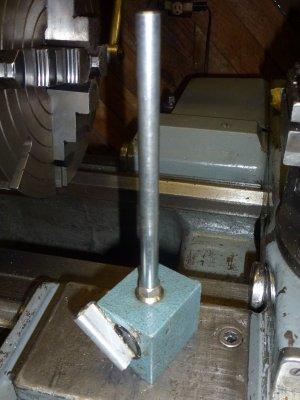
When the glue hardens, I will clean off the excess and maybe even paint the handle, not sure yet on that.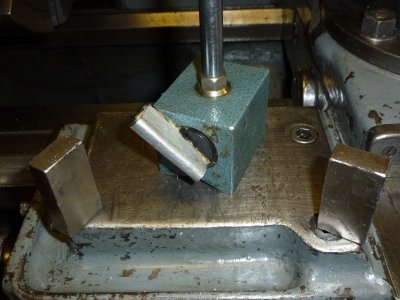
Here is the mag base and the two magnets I used to restore the magnet inside the mag base. I can tell you, you DO NOT want to get those
two magnets stuck together! I had to mount them in a vise and pry them apart with a piece of wood after which I will be sure they stay some distance apart.
Anyway, it was a fun experience this morning so I thought I would share for those of you who have had similar difficulties.
handle broke off that turns the magnet inside the base. It's just plastic and snapped off without
applying what I thought was too much force. I ended up taking the unit apart and pulling the
magnet to clean out any chips that may have dislodged inside. After cleaning, removing and
regreasing the base, the magnet was somewhat weaker......After a lot of experimentation
with some neodymium 1/2 x 1 x 2 magnets, I found out how to restore the magnet to even better
than new. The flat sides of the neodymium magnets apparently are the poles, at least that is
the way they are on my magnets. I placed one magnet on each vertical side of the mag base
using north pole on one side and south pole on the other. After rubbing the magnets back
and forth several times, I removed them and found the mag base was indeed better than ever.
The broken plastic handle was heated with a torch to melt the broken surfaces and pressed together
while the plastic edges were still melted. I reinforced the plastic handle with some aluminum bent
over the plastic and glued it on with some Gorilla glue.

When the glue hardens, I will clean off the excess and maybe even paint the handle, not sure yet on that.

Here is the mag base and the two magnets I used to restore the magnet inside the mag base. I can tell you, you DO NOT want to get those
two magnets stuck together! I had to mount them in a vise and pry them apart with a piece of wood after which I will be sure they stay some distance apart.
Anyway, it was a fun experience this morning so I thought I would share for those of you who have had similar difficulties.


